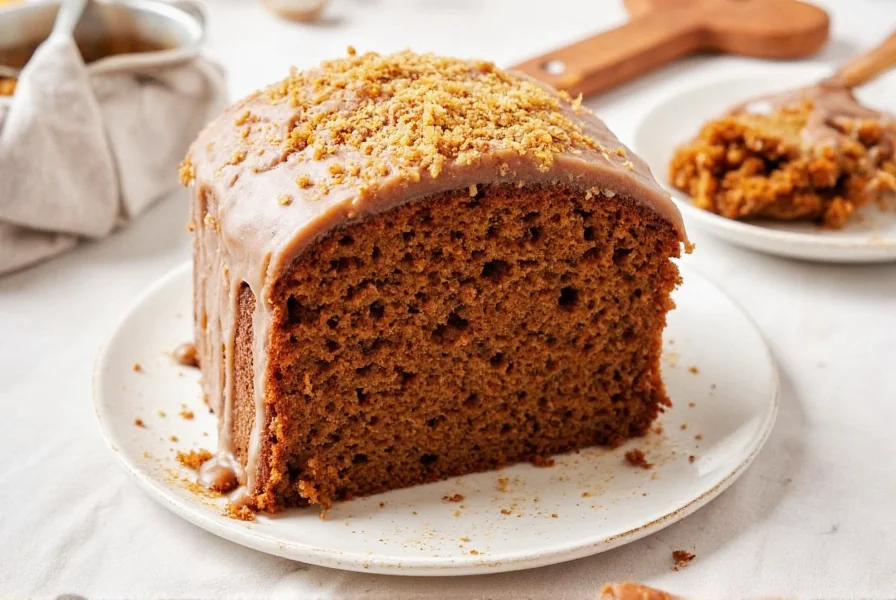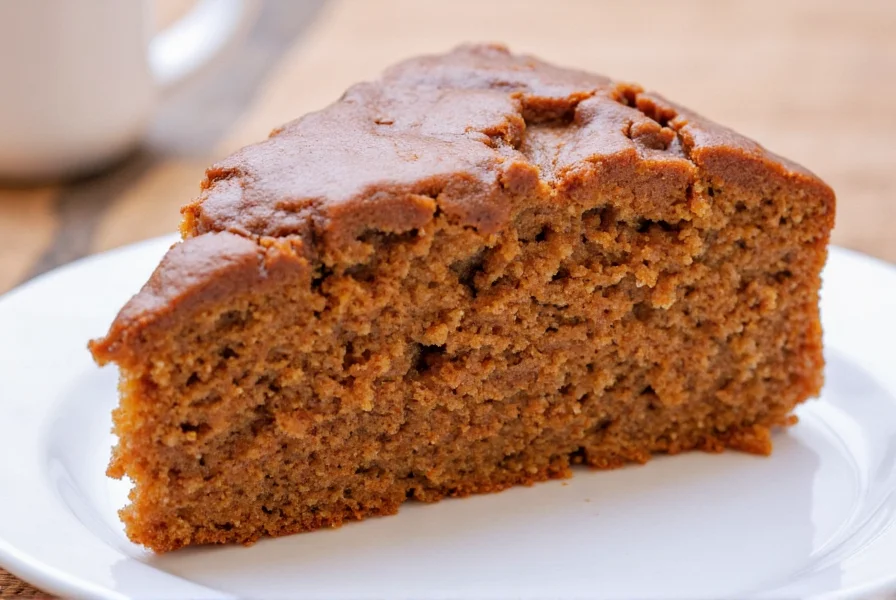If you've ever wondered how to make a truly exceptional ginger cake that's neither too spicy nor too bland, this recipe solves that problem. Many ginger cake recipes either overpower with heat or lack depth, but this version achieves the perfect harmony through a dual-ginger approach and careful ingredient balancing. As a baking professional with decades of experience perfecting spice cakes, I've refined this technique to ensure consistent results for both novice and experienced bakers.
The Science Behind Perfect Ginger Cake
Ginger cake's distinctive flavor comes from multiple ginger forms working together. Fresh ginger provides bright, sharp notes while ground ginger offers warm depth. The secret to balanced spice lies in the ratio: 2 tablespoons freshly grated ginger combined with 1½ teaspoons ground ginger creates complexity without overwhelming heat. Molasses isn't just for sweetness—it contributes acidity that reacts with baking soda for optimal rise while adding rich caramel notes that complement the ginger.
| Ingredient | Measurement | Key Function |
|---|---|---|
| Fresh ginger, grated | 2 tbsp | Provides bright, spicy top notes |
| Ground ginger | 1½ tsp | Creates warm, deep spice foundation |
| Dark molasses | ½ cup | Acidity for rise, complex caramel flavor |
| Buttermilk | 1 cup | Maintains moisture, tender crumb structure |
Essential Ingredients and Substitutions
Quality ingredients make the difference between ordinary and extraordinary ginger cake. Use dark molasses for its robust flavor—light molasses lacks depth. Fresh ginger must be finely grated (not minced) to distribute evenly without creating fibrous bits. For the buttermilk, full-fat provides the best texture, though low-fat works in a pinch.
Common substitutions:
- Gluten-free: Replace all-purpose flour with 1:1 gluten-free baking blend
- Dairy-free: Substitute buttermilk with almond milk + 1 tbsp vinegar
- Vegan: Use flax egg (1 tbsp ground flax + 3 tbsp water) and maple syrup instead of honey
Step-by-Step Baking Instructions
- Prepare pans: Grease two 8-inch round cake pans and line bottoms with parchment paper. Preheat oven to 350°F (175°C).
- Mix dry ingredients: Whisk together 2 cups all-purpose flour, 1½ tsp ground ginger, 1 tsp baking soda, ½ tsp cinnamon, and ¼ tsp cloves.
- Combine wet ingredients: In separate bowl, beat ½ cup softened butter and 1 cup brown sugar until creamy. Add 2 eggs one at a time, then mix in ½ cup molasses, 1 cup buttermilk, and 2 tbsp freshly grated ginger.
- Combine mixtures: Gradually add dry ingredients to wet, mixing just until incorporated. Do not overmix.
- Bake: Divide batter evenly between pans. Bake 35-40 minutes until toothpick inserted comes out clean. Cool in pans 10 minutes before transferring to wire rack.
Professional Baking Tips for Success
Achieving perfect ginger cake texture requires attention to detail. Measure flour correctly by spooning into measuring cup and leveling—never scoop directly from the bag. Overmixing develops gluten, creating toughness, so stop as soon as ingredients are incorporated. The cake is done when a toothpick shows moist crumbs (not wet batter), not when completely clean—that indicates overbaking.
For even baking, rotate pans halfway through. Let cakes cool completely before frosting to prevent melting. This traditional ginger cake recipe pairs beautifully with cream cheese frosting, but also works with simple dusting of powdered sugar for a more rustic presentation.

Storage and Serving Recommendations
Store ginger cake at room temperature for up to 3 days in an airtight container. For longer storage, refrigerate up to 1 week—the flavors actually improve after 24 hours as the spices meld. Freeze unfrosted layers wrapped tightly in plastic for up to 3 months.
Serve at room temperature for best texture. This moist ginger cake recipe pairs wonderfully with vanilla ice cream or a dollop of whipped cream. The warm spices make it particularly suitable for fall and winter holidays, but its balanced flavor works year-round.
Troubleshooting Common Ginger Cake Problems
Dry cake: Usually caused by overbaking or incorrect flour measurement. Set timer 5 minutes early and check for doneness. Use the spoon-and-level method for flour.
Too spicy: Reduce fresh ginger to 1 tbsp while keeping ground ginger amount. The fresh ginger provides the sharper heat.
Sunken center: Often from opening oven door too early or underbaking. Wait until minimum baking time has passed before checking.
Frequently Asked Questions
How can I make ginger cake less spicy while keeping flavor?
Reduce fresh ginger to 1 tablespoon while maintaining the 1½ teaspoons of ground ginger. Fresh ginger provides the sharper heat, while ground ginger gives warm depth. Adding ¼ cup applesauce can also balance spice without diluting flavor.
Why did my ginger cake turn out dry?
Dry ginger cake usually results from overbaking or incorrect flour measurement. Set your timer for 30 minutes and check early. Always use the spoon-and-level method for flour—scooping directly from the bag packs too much flour. Using buttermilk instead of regular milk also helps maintain moisture.
Can I make this ginger cake recipe ahead of time?
Yes, ginger cake actually improves in flavor after 24 hours as the spices meld. Bake and cool completely, then wrap unfrosted layers tightly in plastic wrap. Store at room temperature for up to 3 days or freeze for up to 3 months. Frost just before serving for best presentation.
What's the difference between this ginger cake and gingerbread?
Ginger cake has a lighter, cake-like texture while gingerbread is denser and often spicier. This recipe uses buttermilk for tenderness and less molasses than traditional gingerbread, creating a moist cake suitable for layering. Gingerbread typically contains more spices and is often shaped or cut out, while ginger cake is baked as layers.











 浙公网安备
33010002000092号
浙公网安备
33010002000092号 浙B2-20120091-4
浙B2-20120091-4